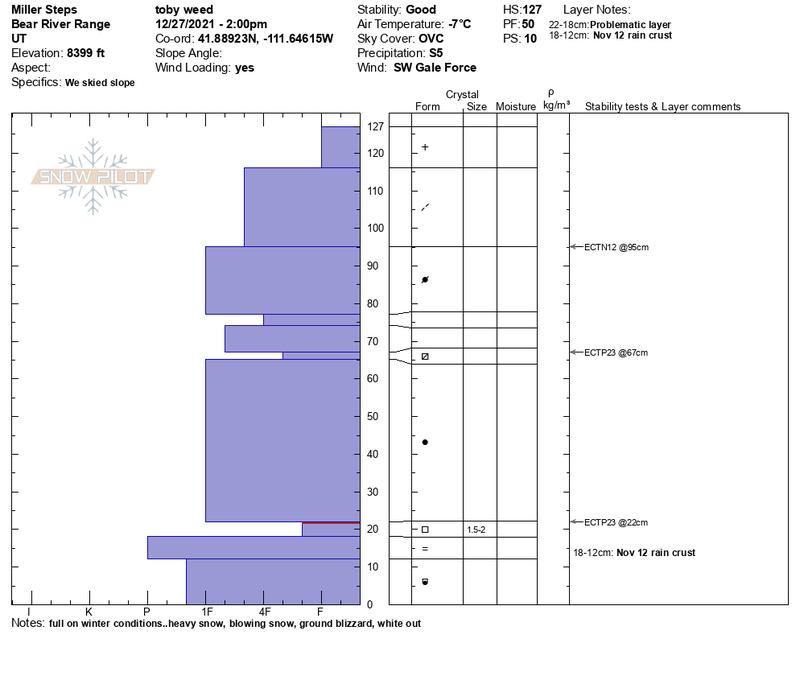Avalanche conditions are very dangerous in the backcountry, and we are worried about an accident happening this week. When we look at accidents, this winter's weather pattern matches what we see time and time again. Early season snow (October & early November) followed by a dry period (November and first week of December) that weakens the snowpack followed by a stormy period that builds a slab and adds stress to the weak layers underneath.
- The outlook for safer conditions in the near future is good, but for now, please ask your friends and riding partners to be patient and not let powder fever lure them into avalanche terrain.
Yesterday, 8 additional inches of snow accumulated at the 8400' Tony Grove Lake Snotel, and the station reports 4.8" of SWE since Thursday morning (12-23-2021). After drifting snow at all elevations yesterday, southwest wind eased overnight, and this morning it's blowing from the west around 25 mph with gusts around 40 mph at the 9700' CSI Logan Peak weather station. I'm reading 3°F at Tony Grove and -5°F at Logan Peak this morning.
Expect diminishing snowfall, moderate west winds, and very cold temperatures in the mountains today, with steady temperatures around 4°F at 8500', 16 to 22 mph west winds on the ridges and wind chill values around -19°F!.
Very dangerous avalanche conditions exist in the backcountry and large avalanches are likely. People should continue to avoid travel in avalanche terrain and stay off and out from under steep slopes including obvious or historic avalanche paths.
An observer reports viewing a recent natural avalanche near Wilderness Peak up in Franklin Basin, and I could see evidence of some recent natural activity in the Wellsville Mountain Wilderness. No other avalanches were reported yesterday, but that doesn't mean there weren't any. Clouds and snowfall have made it hard to see many suspect slide paths for the last several days.
- Please report any evidence of natural avalanches you come across.
Check
HERE for all the latest observations and avalanche activity.













